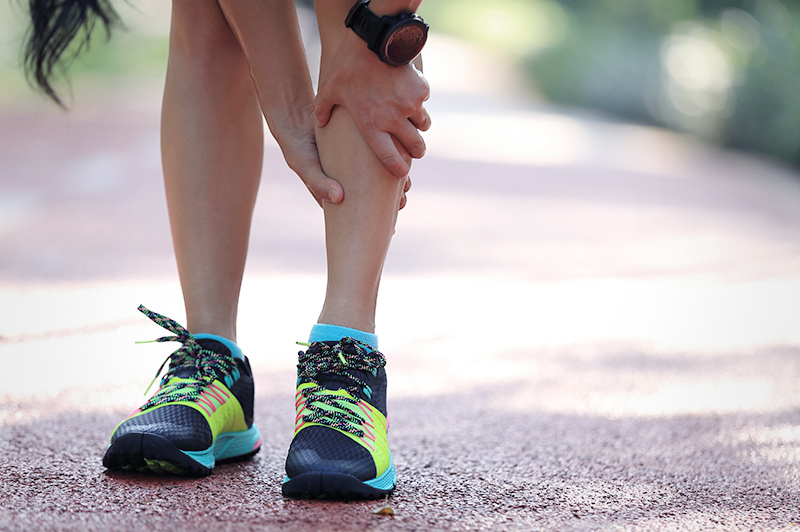About the clinic
The Boston Children’s Hospital Injured Runners Clinic is devoted to the diagnosis, treatment, and prevention of running-related injuries in runners of all ages and ability levels. Affiliated with Harvard Medical School, the Injured Runners Clinic is a partnership between Boston Children’s Sports Medicine Division and The Micheli Center for Sports Injury Prevention. Our multidisciplinary team provides evidence-based care developed from decades of running research.

The surprising energy demands of marathon training
Training for a marathon? Are you eating enough to help your body recover from one long training run and gear ...Read More about The surprising energy demands of marathon training

Fuel to be faster: Studying the effects of low energy availability at the Boston Marathon
Like many sports medicine specialists, Kristin Whitney, MD, MA, suspected that many of the issues she treats in runners — ...Read More about Fuel to be faster: Studying the effects of low energy availability at the Boston Marathon

The key to preventing shin splints may be underfoot
Medial tibial stress syndrome, also known as shin splints, is a common and often recurring injury among adolescent runners. Recovery ...Read More about The key to preventing shin splints may be underfoot
Comprehensive care for runners of all ages and abilities
When working with an injured runner, we assess all factors contributing to their injury, establish a recovery plan, and educate them on how to reduce their risk for injury in the future. We consider all aspects of a runners’ health, including their running gait mechanics, bone health, mental health, hormonal and metabolic health, and how a runner’s nutrition affects their performance.
Common running injuries
Many of our patients come to us with joint, muscle, tendon, and bone injuries. Often these are due to overuse, accidents, or biomechanics. Conditions we specialize in include:
- Muscle and tendon strains
- Stress fractures
- Medial tibial stress syndrome (shin splints)
- Achilles and hamstring tendon problems
- Knee pain (patella tracking issues, IT band syndrome, etc.)
- Chronic exertional compartment syndrome
- Hip pain
- Lower back pain and sacroiliac joint pain
- Plantar fasciitis
- Relative energy deficiency in sport

Our approach to treating running injuries
At the Injured Runners Clinic, our team of clinicians and injury prevention specialists conducts a thorough physical and running gait evaluation for each patient. This helps us understand what factors contributed to the injury and how to correct them. We use cutting-edge technology, such as multiplanar video and force-plate treadmill analysis (a measurement of the impact of a runner’s foot against the ground), to gain a detailed understanding of the runner’s gait and possible problem areas.

Based on the results from this analysis, we prescribe an individualized treatment plan that includes training in flexibility, strength, and neuromuscular coordination. If necessary, we provide a customized retraining program to correct problematic running gait patterns. The goal of the treatment plan is to help the runner recover from injury, prevent future injuries, and ensure their overall health and performance.

Runner injury prevention
Your running form, the way you move your feet in relation to your legs and hips, can help you run efficiently or put you at risk of injury.
What can you do to prevent running injuries?
Many of the injuries we treat may be caused by underlying running mechanics that can be corrected with proper training. Structural and biomechanical factors that commonly lead to musculoskeletal injury include:
- Faulty gait patterns including over striding, stiff landing, hip drop, and improper trunk lean
- Tight Achilles tendons
- Tight hamstrings
- Tight hip flexors
- Tight iliotibial band (IT band)
- Weak abdominal muscles
- Weak gluteal muscles
Innovations in diagnosing and treating running injuries
In addition to our team’s expertise in running gait mechanics analysis, the physicians in the Injured Runners Clinic use state-of-the art diagnostic and therapeutic interventions to diagnose and treat new or chronic injuries. The technologies we utilize in diagnosing and treating runners’ injuries may include sports ultrasound, compartment pressure testing, and ultrasound-guided injection procedures. When appropriate, we offer orthobiologic and regenerative medicine options, including platelet rich plasma (PRP), whole blood, and extracorporeal pulse activation technology (EPAT) to promote healing.
Research into running health and injury prevention
Our research continues to expand clinical understanding what contributes to running injuries and how to keep runners healthy.
Preventing injuries among runners
Though many runners are unaware of them, biomechanical running patterns can contribute to running injury. Using multiplanar video and force-plate treadmill data, we are investigating running gait patterns and how they may predispose runners to various types of injury. This research may help refine recommendations on ways to reduce injury risk while training and performing at a high level.

Long-term health outcomes for runners
Limited research exists on the benefits of running in children and adolescents. Partnering with the Boston-area running groups, our researchers are investigating quality of life and health outcomes such as strength, cardiovascular fitness, and mental health in young runners.
Advanced imaging technologies and cutting-edge treatments
Musculoskeletal ultrasound is gaining increasing recognition as an integral part of the diagnosis and management of sports-related injuries. Researchers in our Injured Runners Clinic and Sports Ultrasound Clinic are researching novel diagnostic capabilities of dynamic ultrasound in athletes. We are also investigating innovative treatment alternatives for musculoskeletal injuries, including ultrasound-guided corticosteroid injections, viscosupplementation injections, platelet rich plasma (PRP), and extracorporeal pulse activation technology (EPAT).
Relative energy deficiency in sport and the female athlete triad
Relative energy deficiency in sport (RED-S) and female athlete triad describe the health effects that can occur when an athlete’s nutritional intake falls short of the energy demands of intense training. RED-S has been recognized as a common health issue among male and female runners and other endurance athletes. Our clinical team is at the forefront of research into RED-S and its impact on athletic performance, menstrual/hormonal health, and bone health.


